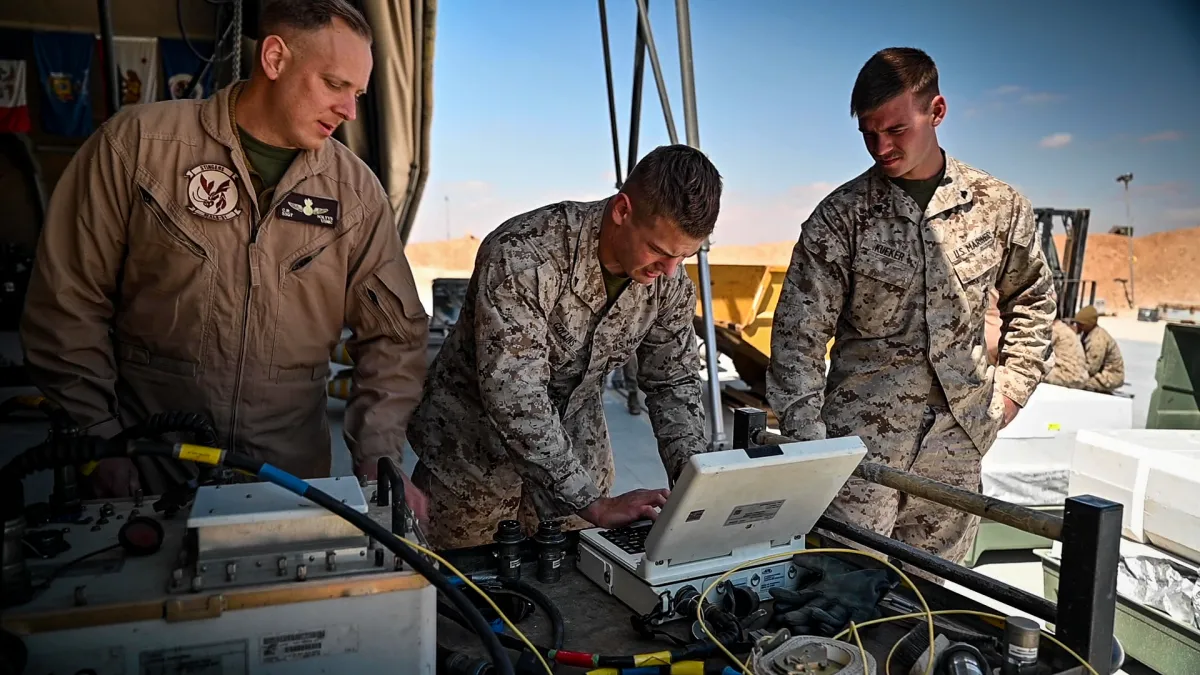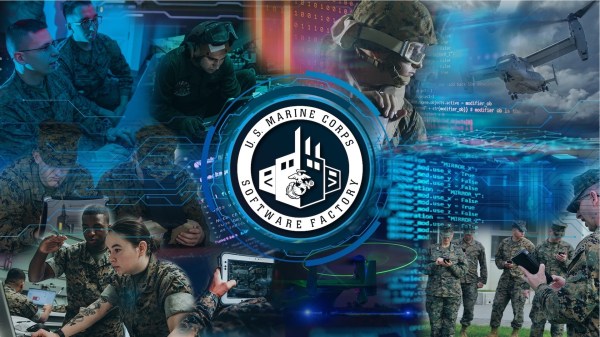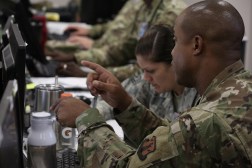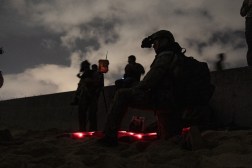Marine Corps using exercises to mature new Information Command

A year after being established, Marine Corps Information Command is focusing on maturing regionally — specifically in the Pacific — with the longer-term goal of global integration and synchronization of information capabilities with traditional military operations.
The MCIC, activated in January 2023, is designed to more tightly link the service’s information forces — including cyber, intelligence and space — in theater with the broader joint force.
The organization is still at initial operational capability and is using a variety of exercises to build up its prowess and relationships.
“It grows with every exercise. Our ability to do it globally [is] not there. Trying to get [it] to regional, start with a couple exercises, and then really start to focus on a particular region and get good there and be able to pick up and pivot,” Maj. Gen. Ryan Heritage, commander of Marine Corps Forces Cyberspace and Marine Corps Forces Space Command, said in a December interview.
Heritage, who was selected to be the next deputy commandant for information, is also the head of the MCIC.
As the U.S. military gears up for potential conflicts with technologically sophisticated nation-states, it is imperative that capabilities from all domains — including the non-kinetic areas of cyberspace, space and the electromagnetic spectrum — are integrated. The Pentagon refers to this concept as “multi-domain operations.”
The MCIC was necessary, officials have stated, as a means of informing commanders about what types of capabilities — and in some cases, more importantly, authorities — exist for non-kinetic tools.
At the joint level, there are many authorities that have to be coordinated, especially in the non-kinetic and digital realms as it pertains to intelligence collection — which is very heavily regulated under spying authorities known as Title 50 — and operations within cyberspace and the electromagnetic spectrum meant to disrupt an adversary’s operations, known as Title 10 or general warfighting authorities.
The emphasis for maturing the MCIC has been on working with combatant commanders to understand the authorities and command relationships, starting with U.S. Indo-Pacific Command.
The goal, ideally, is to start at the planning process to work with relevant stakeholders so they know what types of forces to request and what forces must be readied to deploy in support.
Following those planning conferences, they then can talk about who has the authority to deploy. This could be remote support or forces that actually deploy as part of MARFORCYBER or MARFORSPACE.
“This goes to how do we mature as we grow. If we have folks that are working back here at the Fort [Meade in Maryland], they’ll have a different perspective and they’ll know where different expertise resides — as opposed to somebody who’s perhaps at the tactical level,” Heritage said. “How do we leverage, I’ll call them, interior lines that we have here at MARFORCYBER and the MCIC with other different organizations across the [intelligence community], interagency and [Department of Defense] when we deploy as part of a MCIC? Those relationships remain absolutely essential and again, those planners go with all that information into the conference.”
They are still working on what forces and authorities may deploy in practice.
“The intent is, we haven’t codified this in any fashion, but when you talk about multi-domain effects teams as a model which we’re looking at, is can you provide a multi-domain effects team under the various hats that I wear to either the fleet marine force or the joint force commander?” Heritage said. “If you can, what’s part of that multi-domain effects team? Space, [information operations], cyber, defensive cyber? Then whose authorities do they show up with geographic combatant commanders’ [areas of responsibility] and who do they leverage?”
The two main components of the MCIC include the Marine Corps Information Operations Center and the service’s cryptologic component.
Being a service-retained entity, as opposed to the cyber forces that the Marines and the other services provide to U.S. Cyber Command to conduct cyber operations, allows the MCIC to be part of the global force management process to attach certain forces and deploy them in support of a combatant command.
“It is not intuitive yet, which is why we’re trying to work it out one exercise at a time,” Heritage said, acknowledging they’ve “still got a ton of work to go.”
Some of that has manifested in attempting to support the objectives of various combatant commands — such as Indo-Pacom, Cybercom and Space Command — participating in a single exercise, all of which have their own milestones they need to hit.
“It’s small but it’s growing,” Heritage said of support to help each command meet their objectives.
Heritage noted there have been some “quick wins” with the MCIC and experimentation recently.
“We have been able to deploy Marines from all of our hats into exercises, bringing those authorities and walk those through the planning and execution phase in an exercise scenario,” he said.
Additionally, officials have begun working with Training and Education Command to take lessons and observations from exercises to instill at the Marine Air Ground Training Center at Twentynine Palms, California, to enable the all-domain training they provide for the rest of the Marine Corps.
“We’re integrated Training and Education Command’s initiatives on building service-level training events at Twentynine Palms,” Heritage said. “Now, Training and Education Command has another organization which they can reach up to and say, ‘We’re looking for your support from a [signals intelligence] perspective, from information operations, cyber and space. Help come down and enable the training there at Twentynine Palms for … [the forces] that flow through there on a regular basis.’”






